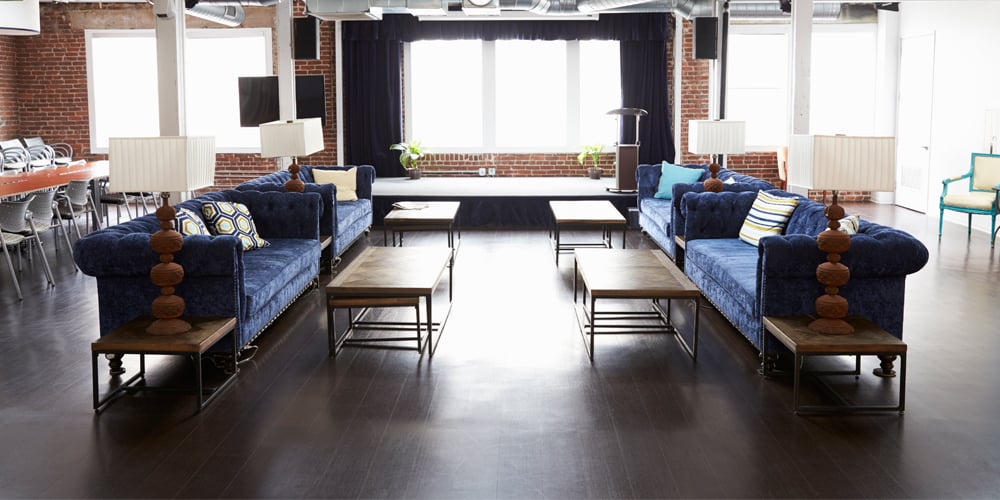 There’s so much more to picking a place to work beyond the job at hand. The job, obviously, plays the biggest part, but you also need to consider what the company’s values are, the culture at the location you’d be working in and the type of office environment.
There’s so much more to picking a place to work beyond the job at hand. The job, obviously, plays the biggest part, but you also need to consider what the company’s values are, the culture at the location you’d be working in and the type of office environment.
You have to enjoy coming to work every day. Again, the job will play a major role in how you feel coming into work, but so too will the other factors mentioned above. Today, we’ll talk about how the environment you work in will impact you.
Here at Anderson Trucking Service (ATS), we work in what’s commonly known as a cubicle environment, one of the more common environments you’ll find in your job search. That said, another common setting you’ll encounter is an open-office environment.
Keep reading to learn what an open-office environment is, along with some of the main pros and cons of working in an open office. Plus, learn a few etiquette tips if you decide to take a job that uses an open-office setting.
What is an Open-Office Environment?
An open-office environment generally has a communal setting (usually in a large, singular space), often using shared workspaces instead of individual working areas, like an office. In most cases, shared desks are used with very short — or even no — walls dividing each person’s space.
Employers choose these workspaces to promote more collaboration between employees and foster a culture centered on trust.
Pros of an Open-Office Environment
Depending on what you’re looking for in an office setting, there are several potential upsides to working in an open-office environment:
- You can collaborate quickly
- You can work in a variety of environments
- You won’t deal with barriers between departments
You Can Collaborate Quickly
An open-office setting can be especially helpful if you work at a business that collaborates frequently. In this environment, you can simply look up at the person across from you and get the conversation started.
It makes impromptu meetings convenient since all you have to do is look around at the people you need to talk to and get started, rather than walking to their individual workspaces, corralling them and organizing a meeting.

You Can Work in a Variety of Environments
Often, open-office environments have other areas throughout the building you can work in if you want to get away from a desk. This provides a change of scenery if you need to get your creative juices flowing.
This isn’t always the case, but many open offices don’t have assigned desks. If that’s true for your prospective career, you might very well have a different desk to work at every day (although, that might be a con to some).
You Won’t Deal With Barriers Between Departments
In many open offices, there’s one central room that everyone works in — so everyone will work alongside each other, no matter which department you work in. That usually goes for managers too. There’s no office for them to hide in, making them feel more approachable.
This can be a great way for all employees to feel like their voices are being heard, no matter what title they have — from founder to coordinator.
Cons of an Open-Office Environment
While an open-office setting can look trendy in marketing photos, it’s not always sunshine and rainbows for everyone. Some employees may not enjoy the following things about working in an open office:
- You’ll get distracted easier
- You’ll have a lack of privacy
- You’ll likely get sick more often
You’ll Get Distracted Easier
We’ll go ahead and state the obvious here, but without walls, you’ll be seeing — and hearing — people more often. All of their impromptu meetings, their side conversations about what they’re doing this weekend — all of it.
That said, a Harvard Business Review study found that face-to-face interactions decreased by 70 percent when companies switched to open-office settings, while electronic interactions increased. They suspect that’s because people don’t want to distract those working next to them. You’ll likely still deal with the 30 percent of interactions that don’t decrease…
You’ll Have a Lack of Privacy
🎵 I always feel like somebody’s watching me 🎶
Beyond hearing people’s conversations, you might get the feeling that someone is always looking at you. That could be the case even if they’re just looking at their computer screen — which just happens to be right in line with your head.
You’ll also have a hard time having a private two-way conversation with your coworker since the others nearby will be able to hear every word you say. If your workplace has conference rooms, you can always sneak in one for a minute. But if your open-office environment means everything is open, it’ll be difficult to find a private place to talk.
You’ll Likely Get Sick More Often
Once again, there’s no — or very little — separation between you and your nearby coworkers. So if they come into work under the weather, your chances of avoiding that illness are slim.
In fact, a study from Ergonomics found employees in open-office spaces take 62 percent more sick days than those in single-person offices. Once that spread starts, it’s hard to stop. So, in an open-office setting, it’s important to instill a culture of staying home when you’re sick — especially if there are remote options available.
How to Be Courteous in an Open-Office Environment
If you’re looking at taking a job in an open-office setting, you’ll have to do your work differently than you might in an office environment. In order to be courteous to those around you, try to stick to the following “rules”:
- Have two-way conversations where others can’t hear them
- Take phone calls in a different setting
- Stay home when you’re sick

Have Two-Way Conversations Where Others Can’t Hear Them
While an open-office environment won’t allow for a 100 percent distraction-free zone, there are things you can do to help avoid distractions. If you have a quick question, try to utilize an instant messaging platform — like Slack, Teams or Google Chat. That way, others don’t hear your conversation and — if you get off on a tangent — it won’t be to the detriment of others around you.
If your conversation will be extended and isn’t conducive to a chat platform, try to find an area in your workplace that allows you to be away from the rest of the team. This can be especially useful if you’re trying to have a private conversation.
Take Phone Calls in a Different Setting
Sometimes, you just have to take a phone call at your desk, for one reason or another. However, in cases where that’s not necessary, it’s courteous to find a different place to take the call.
Grab your laptop and your phone and find a desk in a private area. If your employer has conference rooms, use one of those. Otherwise, use a common area (if it’s not too loud for you) so you’re not disturbing others.
Stay Home When You’re Sick
We mentioned earlier that people are more likely to get sick in an open-office environment, but it doesn’t have to be that way. If your company allows it (and you’re feeling well enough to do so), work from home while you recover. If working from home isn’t an option for you, use a sick day.

Pros and Cons of Working in an Open-Office Environment
If you’re looking at a career that takes you to an employer that utilizes an open-office environment, there are some pros and cons to consider.
Pros:
- Quick collaboration
- Unique environments to work in
- No barriers between departments
Cons:
- Get distracted more easily
- Lack of privacy
- Get sick more often
It’s up to you to decide if the pros are truly pros and the cons are truly cons. Depending on the type of person you are, the cons can be easy to overcome. Or maybe not…
If you pursue a career in an open-office setting, just make sure to be courteous to those around you, whether you host two-way conversations where others can’t hear them, take your phone calls away from your desk and stay home when you’re sick. Hopefully, your coworkers will do the same.
What You Need to Know About Other Office Environments
Not every business uses an open-office environment. As you consider career opportunities, you’ll likely encounter a few different options. Learn more about the pros and cons of the following office settings:
This will leave you better prepared as you determine your career options, knowing which type of office environment is a deal-breaker for you.



